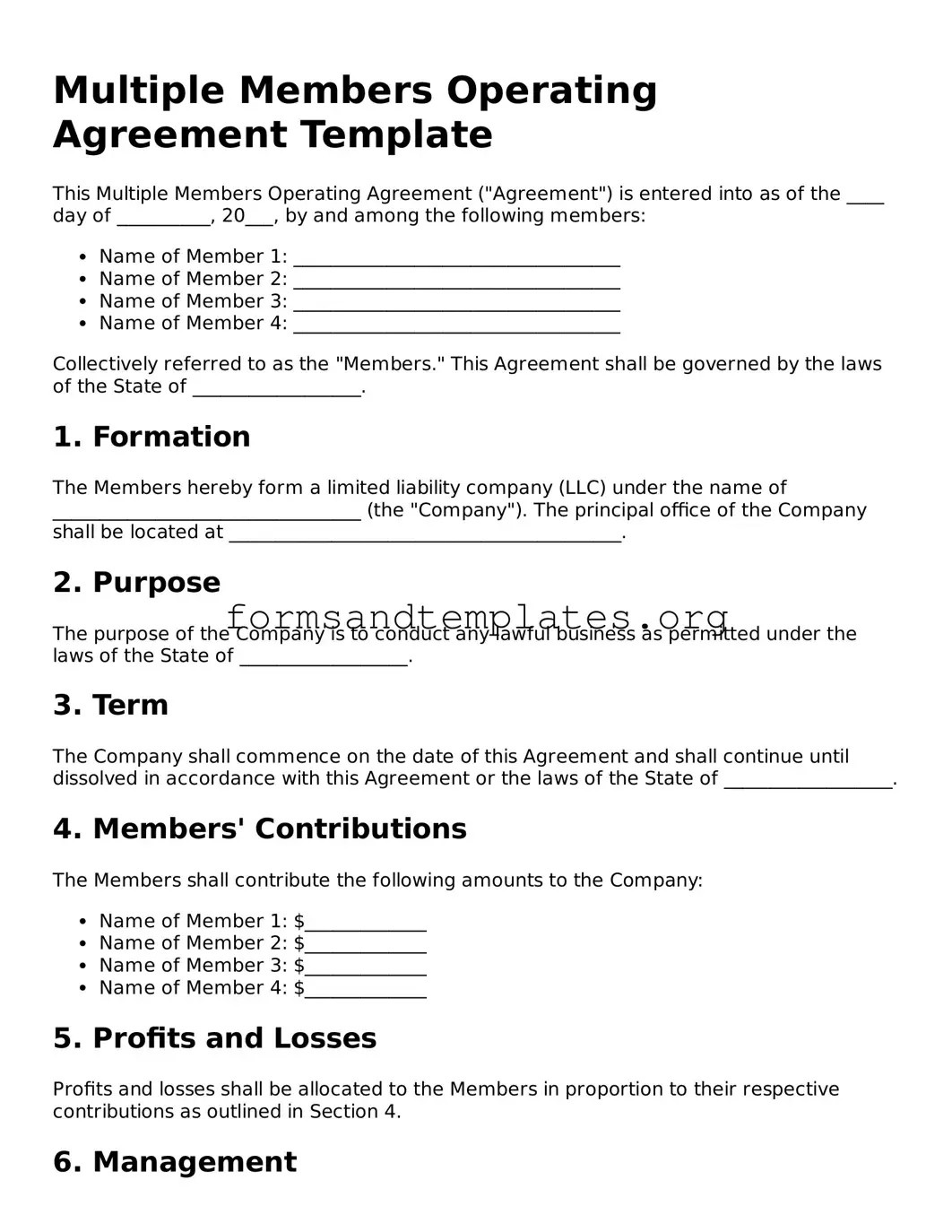Multiple Members Operating Agreement Template
This Multiple Members Operating Agreement ("Agreement") is entered into as of the ____ day of __________, 20___, by and among the following members:
- Name of Member 1: ___________________________________
- Name of Member 2: ___________________________________
- Name of Member 3: ___________________________________
- Name of Member 4: ___________________________________
Collectively referred to as the "Members." This Agreement shall be governed by the laws of the State of __________________.
1. Formation
The Members hereby form a limited liability company (LLC) under the name of _________________________________ (the "Company"). The principal office of the Company shall be located at __________________________________________.
2. Purpose
The purpose of the Company is to conduct any lawful business as permitted under the laws of the State of __________________.
3. Term
The Company shall commence on the date of this Agreement and shall continue until dissolved in accordance with this Agreement or the laws of the State of __________________.
4. Members' Contributions
The Members shall contribute the following amounts to the Company:
- Name of Member 1: $_____________
- Name of Member 2: $_____________
- Name of Member 3: $_____________
- Name of Member 4: $_____________
5. Profits and Losses
Profits and losses shall be allocated to the Members in proportion to their respective contributions as outlined in Section 4.
6. Management
The management of the Company shall be vested in the Members. Decisions shall be made by a majority vote of the Members, unless otherwise specified in this Agreement.
7. Indemnification
The Company shall indemnify its Members against any losses, expenses, or damages incurred while acting on behalf of the Company, to the fullest extent permitted by the laws of the State of __________________.
8. Amendments
This Agreement may be amended only by a written agreement signed by all Members.
9. Dissolution
The Company shall be dissolved upon the occurrence of any of the following events:
- The unanimous agreement of all Members.
- At the end of the Company’s specified term, if applicable.
- As required by law.
10. Governing Law
This Agreement shall be governed by and construed in accordance with the laws of the State of __________________.
IN WITNESS WHEREOF, the Members have executed this Agreement as of the date first above written.
_______________________________ _______________________________
Name of Member 1 Name of Member 2
_______________________________ _______________________________
Name of Member 3 Name of Member 4
